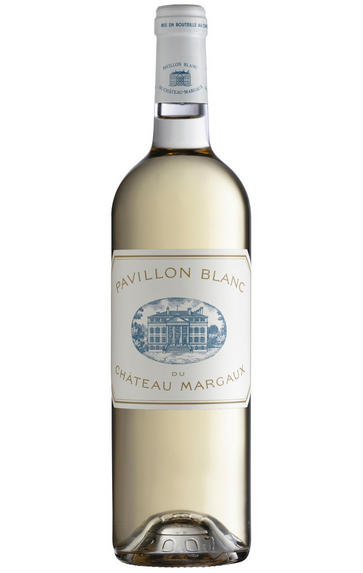
2021 Pavillon Blanc du Château Margaux, Margaux, Bordeaux
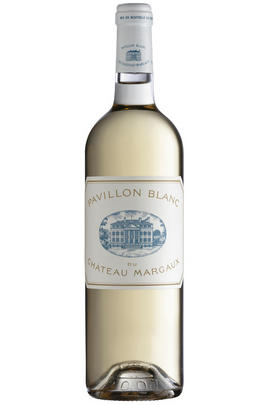
Critics reviews
The 2021 Pavillon Blanc, picked between 7 and 13 September, before the rains, has a well-defined bouquet with scents of pineapple, kumquat, touches of white peach coming through with time. The palate is very concentrated with sour lemon that counterbalances the fatness and density. Touch of lemongrass on the finish.
Drink 2025 - 2040
Neal Martin, Vinous.com (May 2022)
Harvest September 7 to 13, 52% of overall production in this wine.
Fresh acidities, higher than the last few years. It has a lot in common with the brilliant 2017, but is a little more intense in its cut grass and steel notes, without the exotic fruits you can find in a riper year. Instead this majors on white peaches, pear, quince, grated ginger, lemongrass. Clear persistency and one of the wines of the vintage.
Drink 2023 - 2036
Jane Anson, JaneAnson.com (May 2022)
Harmonious, elegant with poise and precision from start to finish. An ethereal quality to the citrus-led aroma and flavour. Drives from the word go so great persistence and length. Should age. One of the best Pavillon Blanc’s yet?
Drink 2024 - 2036
James Lawther, JancisRobinson.com (May 2022)
It was picked between September 7 and 13 and attained 13.3% natural alcohol.
The 2021 Pavillon Blanc is one of the finest recent vintages of this cuvée, combining complete maturity with incisive acids to striking effect. Offering up aromas of confit lemon, citrus zest, crisp orchard fruit and wet stones, it's medium to full-bodied, chiseled and tensile, with striking concentration and chalky structuring dry extract, concluding with a long, mineral finish.
Drink 2025 - 2035
William Kelley, Wine Advocate (April 2022)
100% Sauvignon Blanc.
This is a really serious white. Vibrant and tangy with fantastic energy. Plenty of lime zest, pineapple, crushed stone, cedar, anise and white lavender. Grapefruit, too. Medium body. So much tension at the end. Focused and precise and it just keeps on going. The pH is 3.04, yet it has intense ripeness. A masterpiece of sauvignon blanc. The chateau says it is the best Pavillon Blanc ever.
James Suckling, JamesSuckling.com (May 2022)
About this WINE
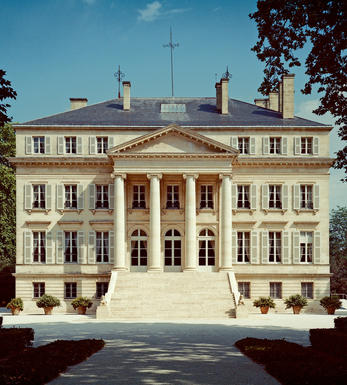
Chateau Margaux
Château Margaux, a First Growth property, has been owned by the Mentzelopoulos family since 1978. It has since consistently produced some of the finest wines in the Médoc.
One of the grandest, most imposing buildings amongst the Médoc châteaux, Ch. Margaux in its current form was built in the early 19th century, although viticulture had been practised on the estate for several centuries before. A chequered period of ownership in the 19th and early 20th century meant that the quality of some vintages was patchy. But the change which restored the property to its rightful status came in 1977 when it was bought by André Mentzenopoulos, Greek by birth but who had lived in France since 1958 and had made a fortune through supermarket retailing. André immediately instigated much-needed investment in vineyard and cellar. His untimely death in 1980 saw his daughter, Corinne, take up the reins. Corinne’s shrewdest move was the recruitment of talented young winemaker Paul Pontallier to oversee the production.
Paul would lead the estate for 33 vintages. He sadly passed away in 2016. Today, the estate is overseen by director Philippe Bascaules and technical director Sebastien Vergne, working with consultant Eric Boissenot.
The estate has 82 hectares under vine, with Cabernet Sauvignon inevitably dominant (75%) with 20% Merlot making up most of the rest, along with a smattering of Cabernet Franc and Petit Verdot. Unusually in Margaux, there is a white wine made here, Pavillon Blanc, from 100% Sauvignon Blanc, while the two red wines are, of course, Ch. Margaux itself and Pavillon Rouge. Typically, about 30,000 cases of red wine are made, with the Grand Vin usually accounting for just over 40% of the total. Production of the white wine amounts to less than 3,000 cases.
Margaux wines are renowned for their perfumed elegance, but this should not be construed as meaning that these are light-bodied. Far from it, as the best have an enviable structure, layers of complexity, and formidable length.
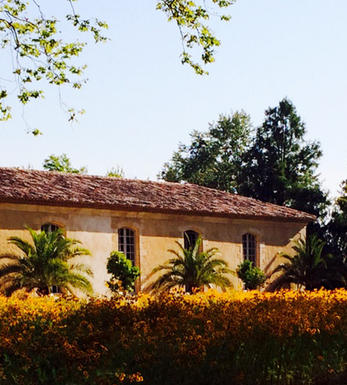
Margaux
If Pauillac can be seen as the bastion of ‘traditional’ Red Bordeaux, then Margaux represents its other facet in producing wines that are among Bordeaux’s most sensual and alluring. It is the largest commune in the Médoc, encompassing the communes of Cantenac, Soussans, Arsac and Labaude, in addition to Margaux itself. Located in the centre of the Haut-Médoc, Margaux is the closest of the important communes to the city of Bordeaux.
The soils in Margaux are the lightest and most gravelly of the Médoc, with some also containing a high percentage of sand. Vineyards located in Cantenac and Margaux make up the core of the appelation with the best vineyard sites being located on well-drained slopes, whose lighter soils give Margaux its deft touch and silky perfumes. Further away from the water, there is a greater clay content and the wines are less dramatically perfumed.
Margaux is the most diffuse of all the Médoc appelations with a reputation for scaling the heights with irreproachable wines such as Ch. Margaux and Ch. Palmer, but also plumbing the depths, with too many other châteaux not fulfilling their potential. There has been an upward shift in recent years, but the appellation cannot yet boast the reliability of St Julien. However, the finest Margaux are exquisitely perfumed and models of refinement and subtlety which have few parallels in Bordeaux.
Recommended Châteaux: Ch. Margaux, Ch. Palmer, Ch. Brane-Cantenac, Ch. Rauzan-Ségla , Ch. Dufort-Vivens, Ch. Ferrière, Ch. du Tertre, Ch. Giscours, Ch. d'Angludet.
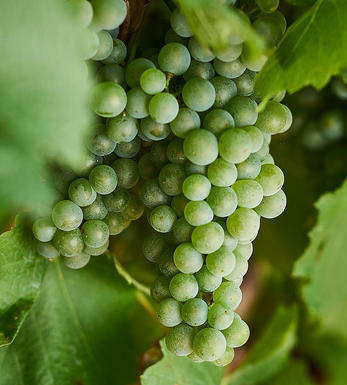
Sauvignon Blanc & Sémillon
The blend used for White Graves and Sauternes and rarely encountered outside France. In the great dry whites of Graves, Sauvignon Blanc tends to predominate in the blend, although properties such as Smith Haut Lafite use 100% Sauvignon Blanc while others such as Laville Haut Brion have as much as 60% Sémillon in their final blends. Sauvignon Blanc wines can lose their freshness and fruit after a couple of years in bottle - if blended with Sémillon, then the latter bolsters the wine when the initial fruit from the Sauvignon fades. Ultimately Sauvignon Blanc gives the wine its aroma and raciness while Sémillon gives it backbone and longevity.
In Sauternes, Sémillon is dominant, with Sauvignon Blanc playing a supporting role - it is generally harvested about 10 days before Sémillon and the botrytis concentrates its sweetness and dampens Sauvignon Blanc`s naturally pungent aroma. It contributes acidity, zip and freshness to Sauternes and is an important component of the blend.


Buying options
Add to wishlist
Description
Sauvignon Blanc 100%
This wine contains the highest combined levels of acidity and concentration ever measured for Pavillon Blanc. Yields were just 18 hl/ha, but only 50% of the crop has been used for the grand vin; the rest was too exotically fruity or lacking freshness. Certainly, there are some exotic notes initially, but these soon subside, and the palate moves from mineral to saline. This is one of the very best-ever examples of Pavillon Blanc. It has real presence, precision and tingling energy.
Drink 2024 - 2035
Our score: 18.5/20
Berry Bros. & Rudd
wine at a glance
Delivery and quality guarantee